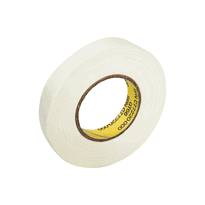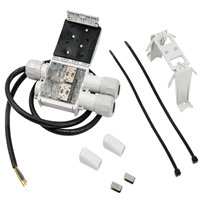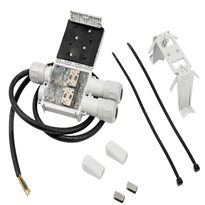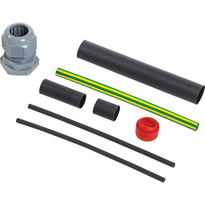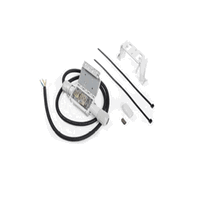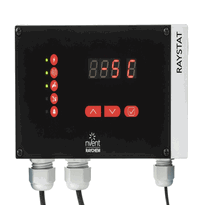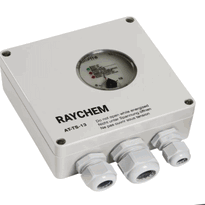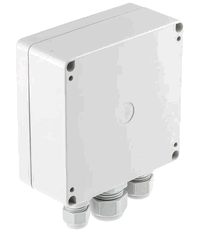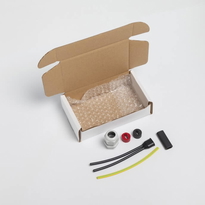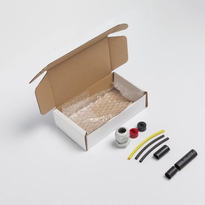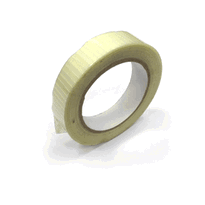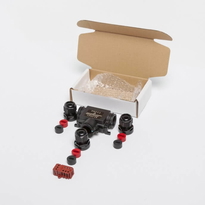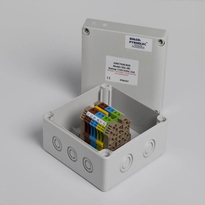Pipe Heat Tape
Pipe heat tape is an electrical device designed to prevent freezing by providing controlled, localized heat directly to pipes, particularly in cold environments. It is available in various types, including self-regulating and constant wattage models, suitable for both residential and industrial applications. Features such as insulation and thermostats help optimize efficiency and safety.
Proper installation is essential to ensure optimal performance. This involves cleaning the pipes thoroughly before applying the tape, securing the tape with even spacing to prevent hot spots or gaps, and making weatherproof connections to protect against moisture. For those seeking detailed guidance on safe installation and effective use, additional information can clarify the ideal application procedures and safety precautions.
Using pipe heat tape correctly can help prevent pipe bursts and water supply disruptions during the colder months. Always follow manufacturer instructions and adhere to local electrical safety regulations to ensure safe and efficient operation.
Understanding the Function and Benefits of Pipe Heat Tape
Pipe heat tape is designed to deliver a controlled source of heat directly to pipes, helping to prevent freezing in colder weather conditions. This electrical heating cable converts electrical energy into heat, which is then evenly distributed along the surface of the pipe, maintaining a consistent and safe temperature. Many models are self-regulating, meaning they automatically adjust their heat output based on the surrounding ambient temperature. This feature enhances energy efficiency and minimizes the risk of overheating, making them a practical choice for a variety of installation environments. Self-regulating heat tape can save energy and reduce the risk of fire hazards. The construction of pipe heat tape typically includes a conductive core whose resistance varies with temperature, copper bus wires, insulation, a protective outer jacket, and sometimes a grounding braid for safety. These cables are suitable for both metal and plastic pipes, and can be used in indoor and outdoor settings. Additionally, the insulation around the heating element plays a key role in maximizing heat transfer efficiency while minimizing energy loss. The primary benefit of using pipe heat tape is its ability to prevent water inside pipes from freezing, which can otherwise lead to costly repairs and extensive damage. By safeguarding plumbing systems during cold weather, heat tape ensures water continues to flow smoothly, reducing the risk of burst pipes and water damage.
Exploring the Different Types of Heat Tape for Pipes
Various types of heat tape are available to provide controlled heating solutions for pipes, each designed to suit specific applications, temperature ranges, and environmental conditions. Self-regulating heat tapes automatically adjust their output based on ambient temperatures, conserving energy and preventing overheating, making them ideal for freeze protection and de-icing tasks. These membranes are essential in building moisture management to prevent issues related to condensation and water ingress that can damage pipes and surrounding structures.
Constant wattage heat tapes deliver uniform heat regardless of conditions, suitable for snow melting or floor heating but less energy-efficient.
Silicone rubber tapes are flexible, resist moisture and chemicals, and operate up to 232°C, with safety features such as thermostats to prevent overheating.
Fiberglass-insulated tapes withstand higher temperatures, up to 482°C, making them suitable for industrial processes.
Samox high-temperature tapes excel where extreme heat tolerance is required, with capabilities up to 760°C.
These diverse options provide essential choices for reliable pipe heating solutions, tailored to the specific needs of various environments and applications within the UK.
Proper Installation Techniques for Optimal Performance
Ensuring the ideal performance of heat tape requires meticulous installation techniques that prioritize proper surface preparation, precise positioning, and secure attachment. First, the pipe surface must be thoroughly cleaned with suitable materials, removing dirt, dust, and moisture. Confirm that the surface is dry before proceeding to prevent electrical hazards. Inspect the pipe for any damage or corrosion prior to installation to avoid exacerbating existing issues. This helps ensure the heat tape maintains good electrical contact with the pipe, maximizing heat transfer. Additionally, choosing the appropriate pipe material and fitting it correctly can improve the efficiency of the heating system and prolong its lifespan. When positioning the heat tape, start at the end nearest the power source. Run the tape lengthwise along straight sections or spiral around curves, maintaining direct contact with the pipe to enable efficient heat transfer. Secure the tape with appropriate electrical tape at intervals of 15 to 30 centimetres, ensuring there are no overlaps. Place the tape on the underside or the coldest side of the pipe, avoiding sharp bends that could damage the tape. After installation, insulate the pipe adequately to maximise energy efficiency and prevent heat loss. Adhering to these installation guidelines will optimize the performance and longevity of your heat tape system.
Comparing Heat Tape With Other Pipe Heating Solutions
When comparing heat tape to other pipe heating solutions such as heat tracing cables, heating blankets, and pipe heaters, it's important to assess their respective features, installation methods, and suitability for different applications.
Heat tape is known for being thin, flexible, and easy to wrap around small or irregular pipes. This makes it particularly suitable for targeted heating of specific sections. It operates on electrical resistance and can be mounted directly onto surfaces, offering a straightforward installation process. These properties make it ideal for DIY projects and quick fixes, especially in residential settings.
In contrast, heat tracing cables are designed to provide a more uniform heat over longer distances, making them more effective for ensuring consistent temperature control along extensive piping routes. These cables are generally more rigid and require careful installation, often necessitating mounting on brackets or clips.
Pipe heaters tend to be rigid units, better suited for complex or larger piping systems. They may include built-in thermostats and are usually used where higher power output or specific temperature regulation is needed.
Advantages of heat tape include
Cost-effectiveness for localised applications
Ease of installation on irregular or small pipes
Suitable for quick, seasonal set-ups
Limitations of heat tape:
Mainly effective for small-scale or targeted needs
Less suitable for extensive piping networks
Tips for Safety and Efficiency in Using Heat Tape
To maximize safety and efficiency when using heat tape, it's essential to adhere strictly to established installation and maintenance procedures.
Regular inspection is critical; annually check for cracked or charred insulation, exposed wiring, and water ingress at end caps to prevent fire risks. Replacement should be immediate for any damage.
Follow the manufacturer’s instructions precisely, avoiding overlaps and wrapping at sharp angles, which can cause overheating. Secure heat tape with approved fasteners and never cover it with insulation unless specified by the manufacturer, and only with non-flammable materials such as fiberglass.
Ensure the heat tape is connected to a GFCI-protected socket and is rated appropriately for the pipe size. Certified heat tapes are designed to meet safety standards, which further reduces the risk of fire or electrical hazards. Regularly test electrical safety devices and monitor the system during cold periods to maintain safe, efficient operation.
Conclusion
Proper selection, installation, and maintenance of pipe heat tape ensure effective freeze protection and energy efficiency. By understanding the specific types available and adhering to safety guidelines, users can optimise performance and prevent damage. Comparing heat tape with alternative heating methods helps determine the most suitable solution for each application. Consistent vigilance and proper handling are essential to maximise safety, durability, and functionality, ultimately safeguarding piping systems from cold weather-related failures.








